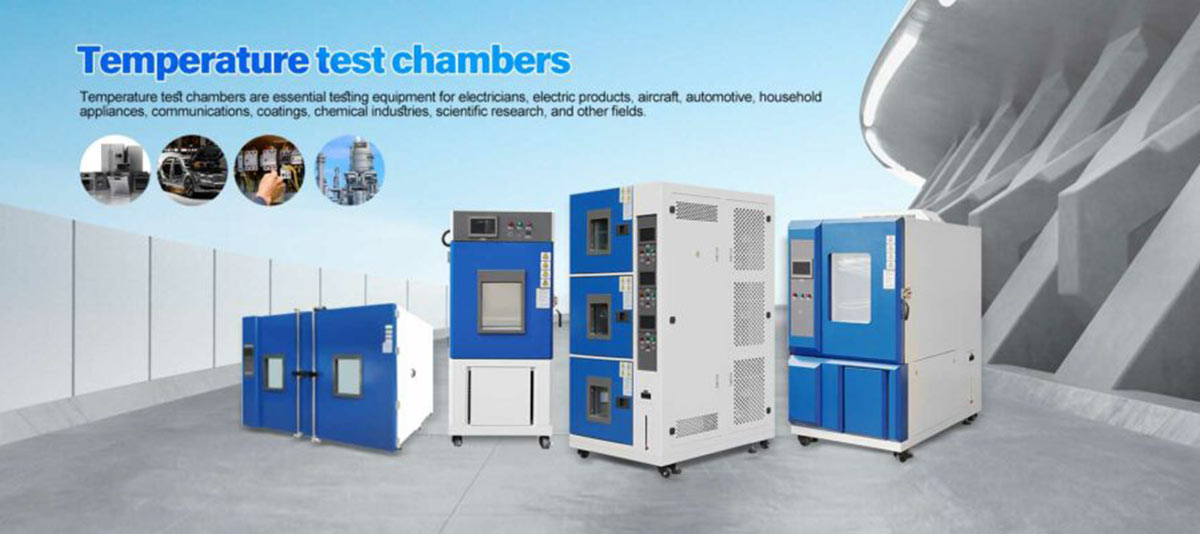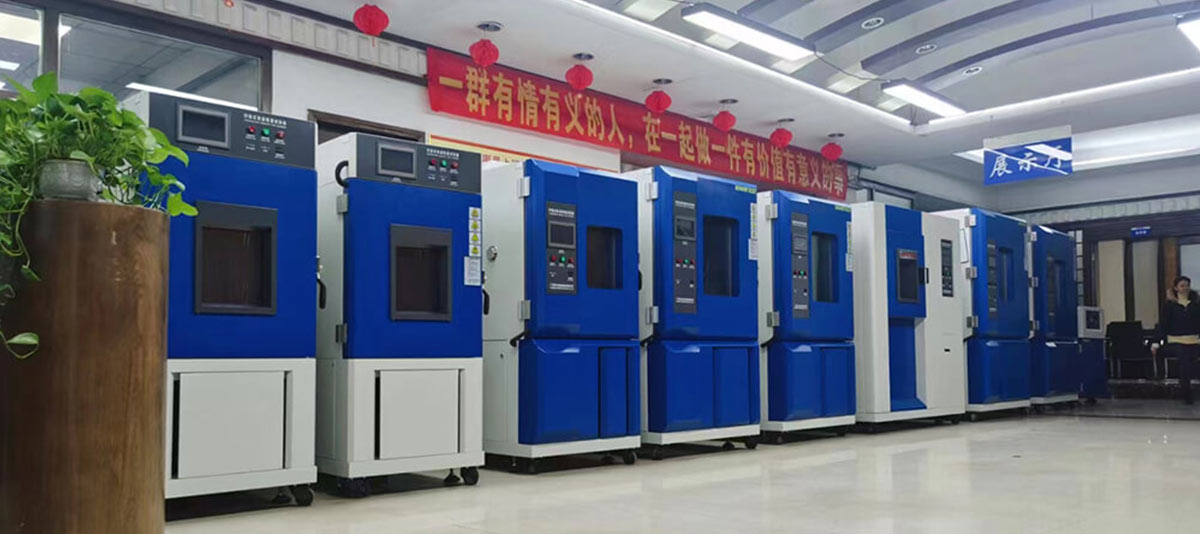If an electronics company wants to know if its equipment can survive a drop into the ocean or remain operational as temperatures dip toward zero? What should be done for a car manufacturer to construct their warranty? How do you know that mobile phone batteries will not be overheated and burned? All you need is a constant temperature test chamber.
1. What is A Temperature Test Chamber?
Temperature Test Chambers are controlled atmospheres that create the conditions to which items are exposed during use. This highly controlled technical equipment makes various types of hazards, applications, and conditions that the product may encounter. To determine the life of an item, a Temperature Test Chamber can be used to rapidly change the product to create conditions that simulate the life of the product.
A temperature test chamber allows companies to test how their products react when exposed to extreme conditions. The ability to create these conditions helps bring products to market that fail to meet customer needs.
2. How Does a Temperature Test Chamber Work?
Temperature Test chambers, also known as environmental test chambers, utilize the power of air convection for thermal testing. In many ways, they function like ovens. The main requirement is airflow driven by fans and motors to circulate air through the chamber for testing.
The temperature test chamber uses different techniques to generate various temperatures to simulate different atmospheric conditions. The differences in workmanship are not directly related to the effectiveness of the equipment but are more consistent with the specific workmanship employed by the manufacturer. Many manufacturers offer various ways to meet the needs of their customers.
The temperature test chamber measures the lasting effects of temperature changes to determine the quality of components or parameters. They help determine how materials behave under extreme conditions, including temperature changes due to changes in humidity. Tests can be static or dynamic to trigger and cause failure.
3. Types of Temperature Test Chamber
Incubators come in a variety of types and sizes, from those that can fit on a shelf to those that are as big as a building. The main factors in choosing a temperature test chamber are the available space and the ideal conditions.
While you can usually buy generic test chambers, buyers work with manufacturers to design precise test chambers that meet customer requirements. There are many aspects that each client wants to test, and the testing room they choose should meet these requirements.
1) Portable Temperature Test Chamber
Portable incubators deliver top performance in a small footprint. They’re easy to install, use very little power, and make very little noise, yet they have all the basic features of larger models. Regardless of the size of the portable device, it can generate temperatures ranging from 70°C to 150°C.
2) Desktop Temperature Chamber
Desktop temperature chambers are similar to portable incubators, providing an efficient method of temperature testing with a small footprint. They are used to test smaller components such as circuit boards for computers, sensors, and cell phones. Despite their small size and adaptability, they are ideal for small-scale testing research, and development. Benchtop thermostats range from 0.89 cubic feet to 5.5 cubic feet. cubic meters at temperatures between 68°C and 180°C.
3) Reach test chamber
The reach test chamber is slightly larger than the benchtop model. They can be placed on the ground and come with wheels or casters for easy mobility. They have a smaller footprint but higher capacity, comparable to a benchtop or small test bench. They range in size from 10 cubic feet to 64 cubic feet and are available in temperatures from -68 degrees Celsius to 180 degrees Celsius. The average temperature of the penetration test chamber is +-1.0 degrees Celsius.
4) Walk-in test chamber
As the name suggests, walk-in test chambers are very spacious and are designed to accommodate many or huge components. They can be built modularly and transported as a single unit or on-site. Most walk-in rooms are custom-made to meet client requirements. Panel walk-in rooms are made of lightweight insulating panels for easy installation and the walls of the solid walk-in rooms are welded to ensure an ideal seal.
Walk-in climate control rooms come in a variety of sizes, from 286 cubic feet to over 1,400 cubic feet. While these are typical dimensions, most walk-in darkrooms are custom created and built. Depending on the model, they can be temperature-controlled between 40 degrees Celsius and 150 degrees Celsius.
5) Drive-in test chamber
Drive-in test chambers are used for testing automotive components and components as part of complete vehicles. While individual components can be examined in smaller chambers, they also allow manufacturers to study the weathering of components as they are integrated into final products. There is no standard size for a drive-in sanctuary like a walk-in sanctuary. They can be small enough to fit in a small car or a large diesel truck. Specifications and dimensions differ from automaker needs.
The difference in size applies to other aspects of the chamber as well. It can be said that all laboratories are equipped with PID control systems. In the case of a drive-in, the programs in the system may be more precise in the information required.
4. Industries That Rely on Temperature Test Chamber
Manufacturers utilize temperature test chambers to test their products prior to launch. This is especially true for products of the highest quality and durability. Temperature Test Chamber creates manufacturing conditions and environments that replicate product situations customers may encounter. The advantage of a Temperature Test Chamber is the creation of different possibilities in a controlled, isolated environment.
Many industries rely on data generated through test chambers. The size and type of chamber depend on the business and its needs. Automotive, semiconductor cement producers, the food industry, and pharmaceutical companies rely on test rooms to develop their products. In many cases, customers determine the layout, design, and use of test rooms according to the requirements of their specific business.
1) Pharmaceutical
When pharmaceutical products are exposed to inappropriate temperatures, they can be severely damaged, resulting in impaired performance. Decomposition may occur, greatly reducing the effectiveness of the drug. It can result in damage to medicines that do not provide the expected results.
2) Car
As demands for safety efficiency, performance, fuel economy, and long-lasting performance grow, so do electronic components. Automotive electronics consists of sensors, semiconductors, and different subsystems. A modern car has fifty switches, sensors, and other electronic controls. To guarantee the performance of these electronic components, they are tested in Temperature Test Chamber with temperatures ranging from 80°C to 225°C or higher. Conditions can be set up in a benchtop test chamber or in an enclosed drive-in test chamber to test the durability of all components simultaneously.
3) Electronic product
Temperature Test chambers are used in the electronics industry to test IC electronic circuits, semiconductor drivers, sensors, and power supplies. Test chambers used to evaluate electronic products simulate various climatic and atmospheric conditions.
4) Medical
The medical field has strict regulations on the production, transportation, and product style of its products. Local and national governments enforce these rules to protect the public.
Medical product standards also apply to equipment used to test products.
5) Army
The main goal of testing military equipment is to determine how it will react under extreme conditions. Different tests can reveal how and for how long a product reacts. These are vital aspects for soldiers working in the most dangerous environments.
5. Weak Spot Temperature Test Identification
Temperature stresses products and is something every item comes into contact with during use. The importance of temperature to items varies from product to product. Most of the time, electronics are more stressed in terms of temperature due to the way they work. Specific temperature tests can be performed to assess the effectiveness of the product. The first tests included:
- Low temperature and high temperature and low temperature.
- Thermal cycling.
- Shock
- Temperature combined with humidity.
1) High-Temperature Test
Many elements can be detected by testing at elevated temperatures.
- Melting of insulation and components
- Expansion or contraction of the finished surface
- Reduced component duration
- rapid aging
- Increased temperature triggers oxidation or chemical reaction
- Different electronic components can be prone to overheating and failure.
- For large machines and equipment, the viscosity of the lubricant may change
- Mechanical and Structural Changes
2) Low-Temperature Test
- loss of elasticity and brittleness
- change in electrical constant
- component freeze
- In large machinery, lubricants can turn into gels or change in viscosity
- Rapid heat dissipation
- Surface peeling or cracking or surface peeling
- complete structural failure
3) Rapid Cycling of Temperature
- Change the response of different parts at different temperatures
- Material size and form can vary
- Seals, insulating washers, shafts, and bearings are replaced and modified
- The performance of the circuit fluctuates over various temperatures
- Broken or disengaged connectors and splices
- circuit board failure
6. Conclusion
A Temperature Test Chamber is a controlled environment that creates the conditions a product may encounter when in use. The temperature test chamber tests the long-term effects of temperature changes to determine the quality of components or parameters.
An incubator provides the opportunity to build conditions and environments that simulate what a customer might encounter when purchasing a product. A temperature test chamber is a general term describing a chamber used to conduct various environmental tests. Temperature stresses products and is something every product comes into contact with during use.




